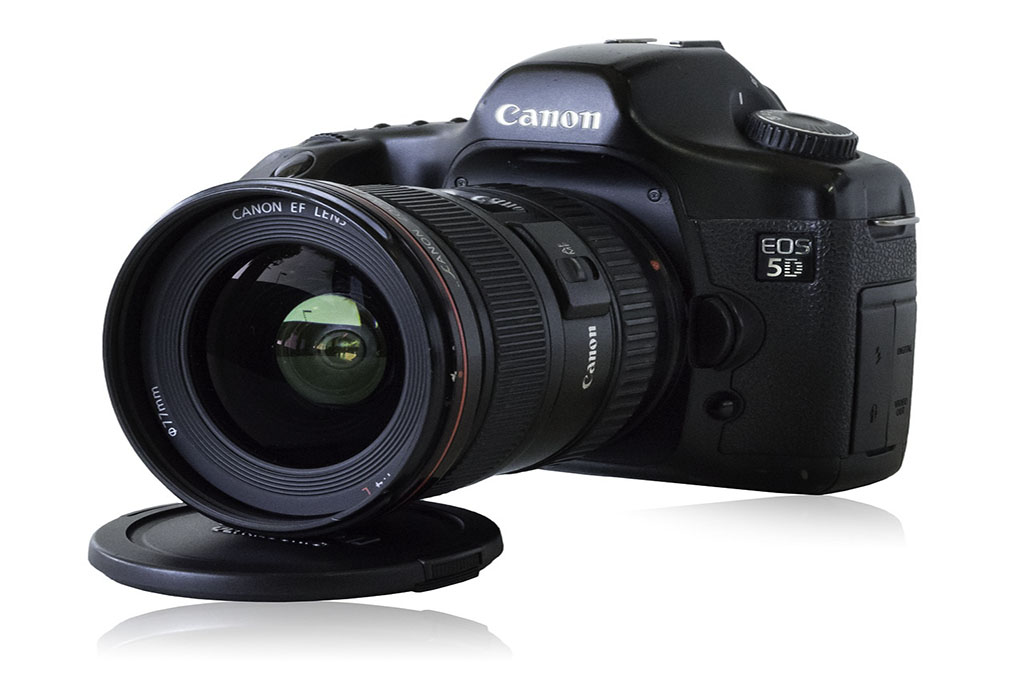
In digital photography, few cameras have left a mark as profound as the Canon EOS 5D. Initially introduced in 2005, this legendary camera quickly became a favorite among professional and advanced amateur photographers for its remarkable image quality, versatility, and innovative features. Despite the evolution of camera technology, the Canon EOS 5D remains a timeless classic that continues to be cherished by photographers worldwide.
A Pioneering Full-Frame Marvel:
The Canon EOS 5D’s pioneering spirit was most notably exemplified by its introduction of the full-frame sensor, a groundbreaking innovation that revolutionized the world of digital photography. In the early 2000s, full-frame sensors were a rarity in the consumer market, reserved for high-end professional cameras with exorbitant price tags. However, the Canon EOS 5D changed the game by making the full-frame sensor accessible to a broader audience of photographers, from professionals to advanced amateurs and even enthusiasts eager to elevate their photography to the next level.
This innovation’s heart was the 5D’s 12.8-megapixel full-frame CMOS sensor. This sensor was larger than those found in most contemporary DSLRs, and its size allowed for capturing more light and detail, resulting in exceptional image quality. The term “full-frame” refers to the sensor’s dimensions, which closely approximate the 35mm film format, and this generous sensor size enabled the camera to produce images with a remarkable level of detail, depth, and clarity.
One of the sensor’s most celebrated attributes was its remarkable performance in low-light conditions. With its large individual pixel size and advanced sensor technology, the 5D excelled at capturing images in challenging lighting scenarios. This was a game-changer for photographers, as it meant they could confidently shoot in dimly lit environments without sacrificing image quality. Whether it was a dimly lit interior, a starry night sky, or a moody sunset, the Canon EOS 5D delivered exceptional results, even at high ISO settings.

Combining the full-frame sensor and impressive low-light capabilities allowed photographers to explore new creative horizons. They could easily achieve a shallow depth of field, creating beautifully blurred backgrounds that emphasized their subjects. The 5D’s sensor became a canvas for artistic expression, empowering photographers to capture their vision with unparalleled precision.
Moreover, the Canon EOS 5D’s full-frame sensor profoundly impacted how photographers approached their craft. It encouraged them to revisit and experiment with lenses, as they could fully realize the potential of wide-angle and fast prime lenses. The rich, detailed images it produced were especially prized for landscape, portrait, and architectural photography, where every nuance and texture of the subject or scene could be faithfully reproduced.
The Canon EOS 5D’s introduction of a full-frame sensor in 2005 was a monumental milestone in photography. This innovation democratized access to a feature once the exclusive domain of high-end professional cameras. The 5D’s 12.8-megapixel full-frame CMOS sensor, renowned for its remarkable image quality and impressive low-light performance, not only broadened the horizons of photographers but also paved the way for the continued evolution of digital photography, shaping the industry in profound ways.
Image Quality and Low-Light Performance:
The 5D was celebrated for capturing stunning images even in challenging lighting conditions. With an ISO range of 100 to 1600, expandable to 50-3200, photographers could confidently shoot in low light while maintaining excellent image quality. This made the Canon EOS 5D an ideal choice for landscape photographers capturing the golden hour and photojournalists covering events in various lighting scenarios.
Timeless Design and Durability:
One of the most enduring aspects of the Canon EOS 5D is its robust build and timeless design. The camera featured a magnesium alloy body that felt solid and durable, and its weather-sealed construction made it resilient against the elements. The camera’s ergonomics were well-thought-out, with easily accessible controls and a comfortable grip, making it a joy to use even during extended shooting sessions.
The 5D also retained the classic Canon EOS interface, which has remained broadly consistent. This made it easy for photographers to transition to the 5D from other Canon EOS models.

Live View Mode and Video Capabilities:
The Canon EOS 5D Mark II, released in 2008, took the 5D series to the next level by introducing live view mode and high-definition video recording. The ability to use the LCD screen to compose shots and capture video revolutionized how photographers worked, opening up new creative possibilities. Many professional filmmakers and documentarians embraced the 5D Mark II for its exceptional video quality, and it played a significant role in the DSLR video revolution.
The Canon EOS 5D Today:
Despite being released over a decade ago, the Canon EOS 5D remains famous for photographers today. It has a dedicated following, and the used market for these cameras is still quite active. The camera’s affordability and outstanding image quality make it a compelling option for beginners and seasoned photographers looking for a second body or a backup camera.
Conclusion:
The Canon EOS 5D, with its groundbreaking full-frame sensor, remarkable image quality, and versatile features, holds a special place in the history of digital photography. Its timeless design, durability, and significant impact on photography make it a classic that continues to be celebrated and used by photographers worldwide. Whether you’re an enthusiast looking for a reliable camera or a professional searching for a dependable workhorse, the Canon EOS 5D is a camera that has truly stood the test of time.


Recent Posts
In shadows cast by love's deceitful guise,He wandered blind, his heart the captive prize.Through realms unknown, where truth remained concealed,He followed trails of falsehood, unrevealed. Blinded...
Prepare to be amazed as the MCAS Cherry Point Air Show returns on May 11-12. This annual event, hosted by the Marine Corps Air Station (MCAS) Cherry Point in North Carolina, promises a weekend of...